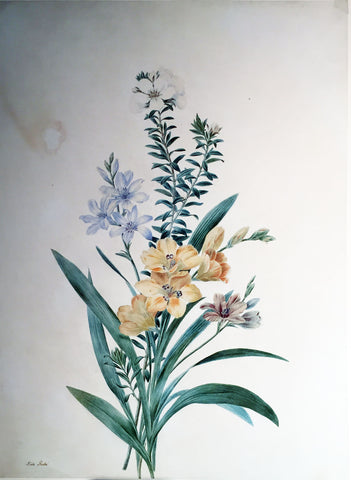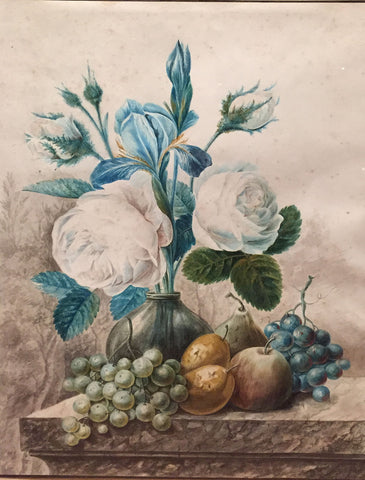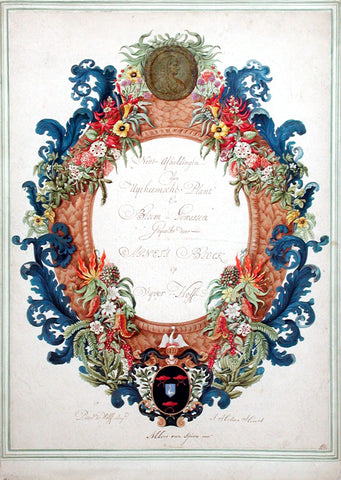
Johann Theodore de Bry (Dutch, 1561-1623), Study of Crocuses
Attributed to Johann Theodore de Bry (1561-1623)
Study of Crocuses [Crocus sianus., C. vernus, Corydalis cava, C. cava ‘Alba,’ C. Halleri]
Watercolor and gouache on paper
c. 1630
Paper size: 12 1/2 x 7 7/8 in.
Frame size: 20 x 15 1/4 in.
Provenance: Hunt Institute, Carnegie-Mellon University, Pittsburgh
Johann Theodor de Bry was a prominent member of one of the foremost families of artists of the sixteenth and seventeenth centuries: the son of Theodor de Bry and the grandfather of Maria Sybilla Merian. His father was famed for being the publisher of the series Great Voyages, which was issued from 1590 until 1630. The Great Voyages consisted of illustrated travel narratives that remain fundamental artistic and historical documents of the Age of Discovery, and Johann Theodor began his publishing career by assisting his father in that seminal enterprise. Eventually, he would become the most prolific printmaker of the family, practicing both engraving and etching. With his father and his brother Johann Israel, he published two popular emblem books: Emblemata nobilitate et vulgo scitu digna (1593) and Emblemata secularia (1611).
De Bry is most acclaimed, however, for his great florilegia. A florilegium was a type of illustrated flower book that became popular in the seventeenth century, and de Bry was responsible for two of the most beautiful florilegia of his time: the Florilegium novum (1611) and the Florilegium renovatum et auctum (1641), which he published along with his brother-in-law (and equally noted artist) Matthias Merian. In de Bry’s day, the tulip was a new import from Turkey, where it was so popular that annual tulip festivals were staged by the sultan. After their introduction into Europe, the early seventeenth century witnessed a “tulipmania” in which prices rose to ridiculous levels and the tulip became the object of wild financial speculation. When the bottom suddenly fell out of the market in 1637, people who had mortgaged their homes and estates to buy bulbs and make quick fortunes were ruined.
Please feel free to contact us with questions by phone at 215.735.8811,
or by email at loricohen@aradergalleries.
We Also Recommend





